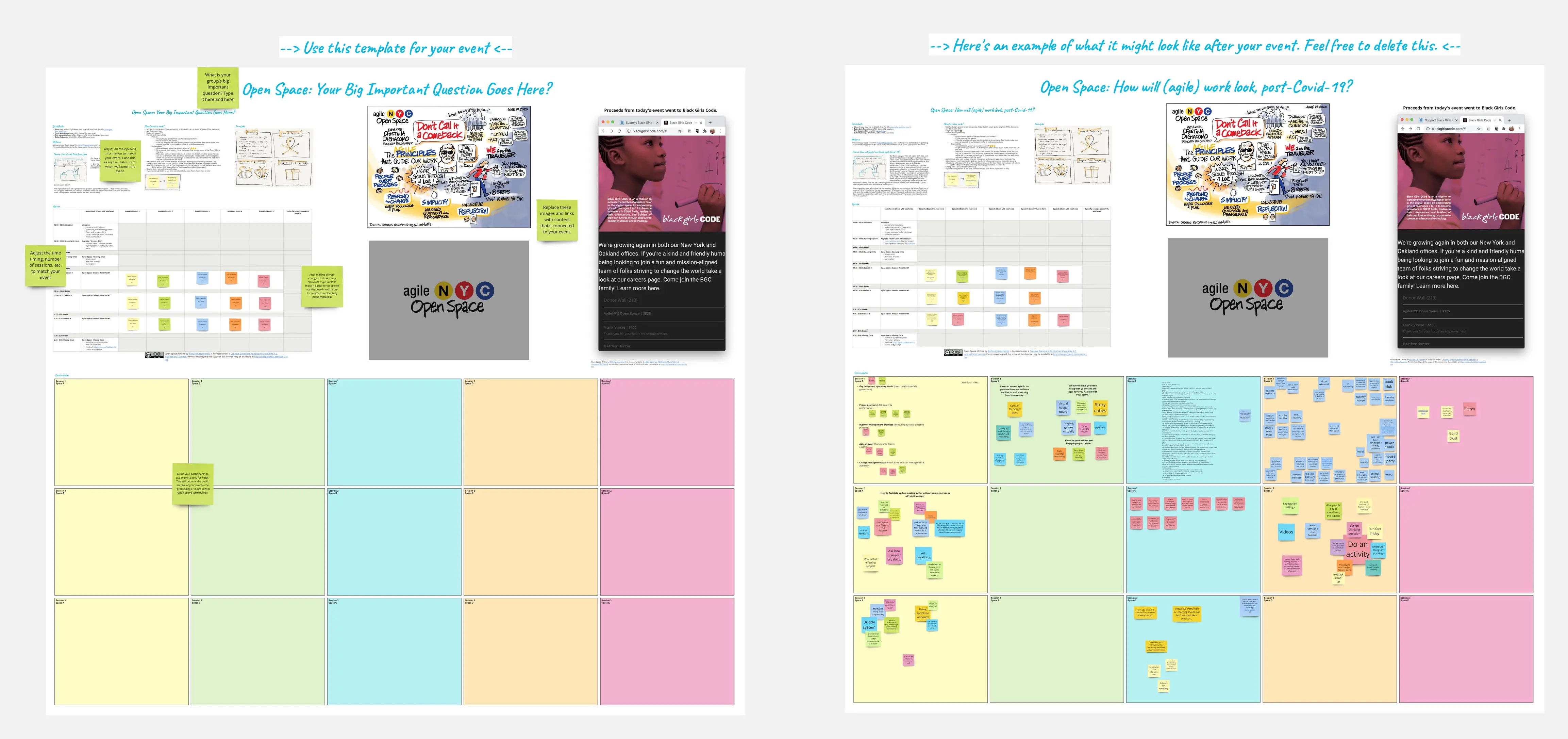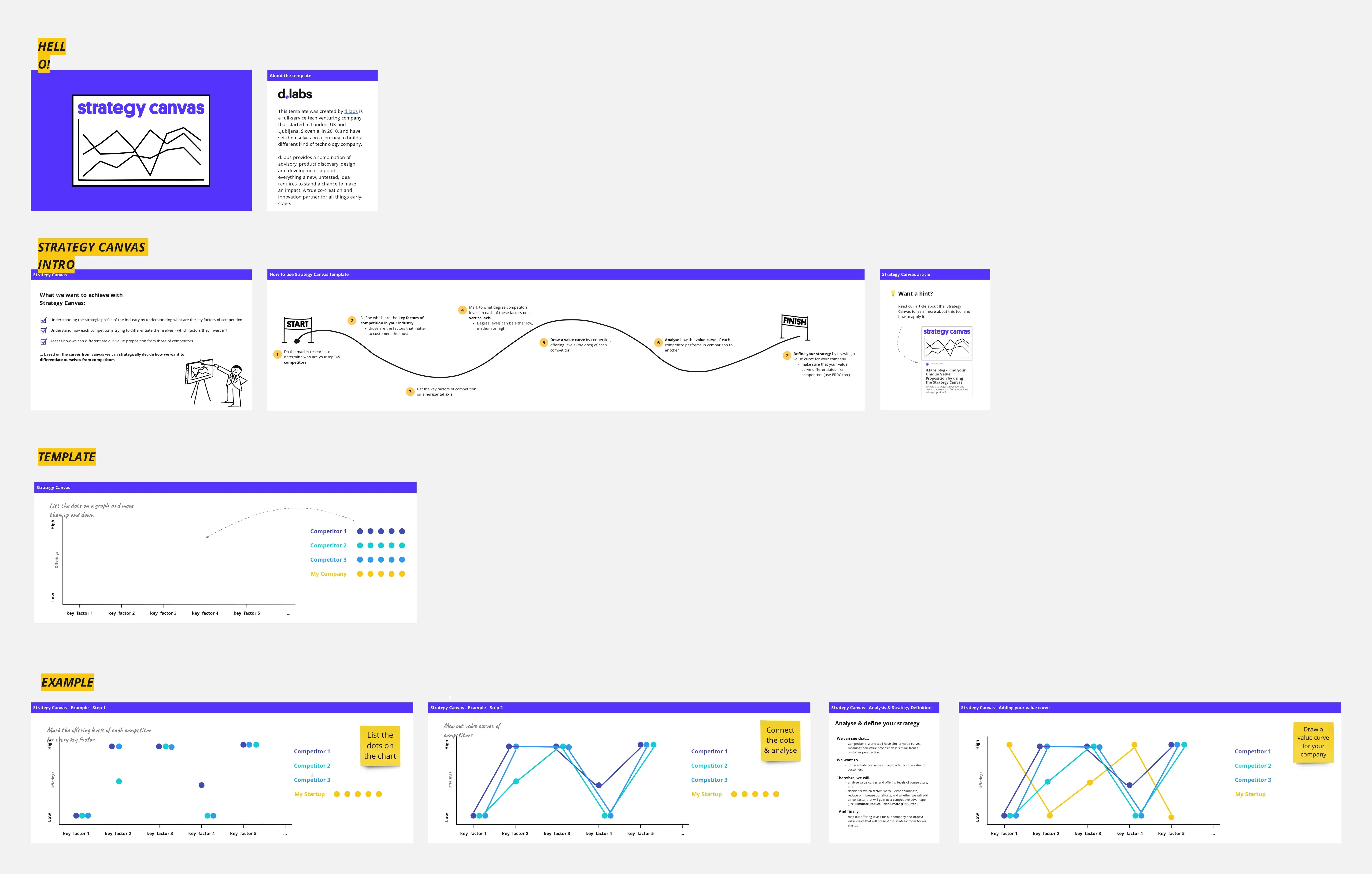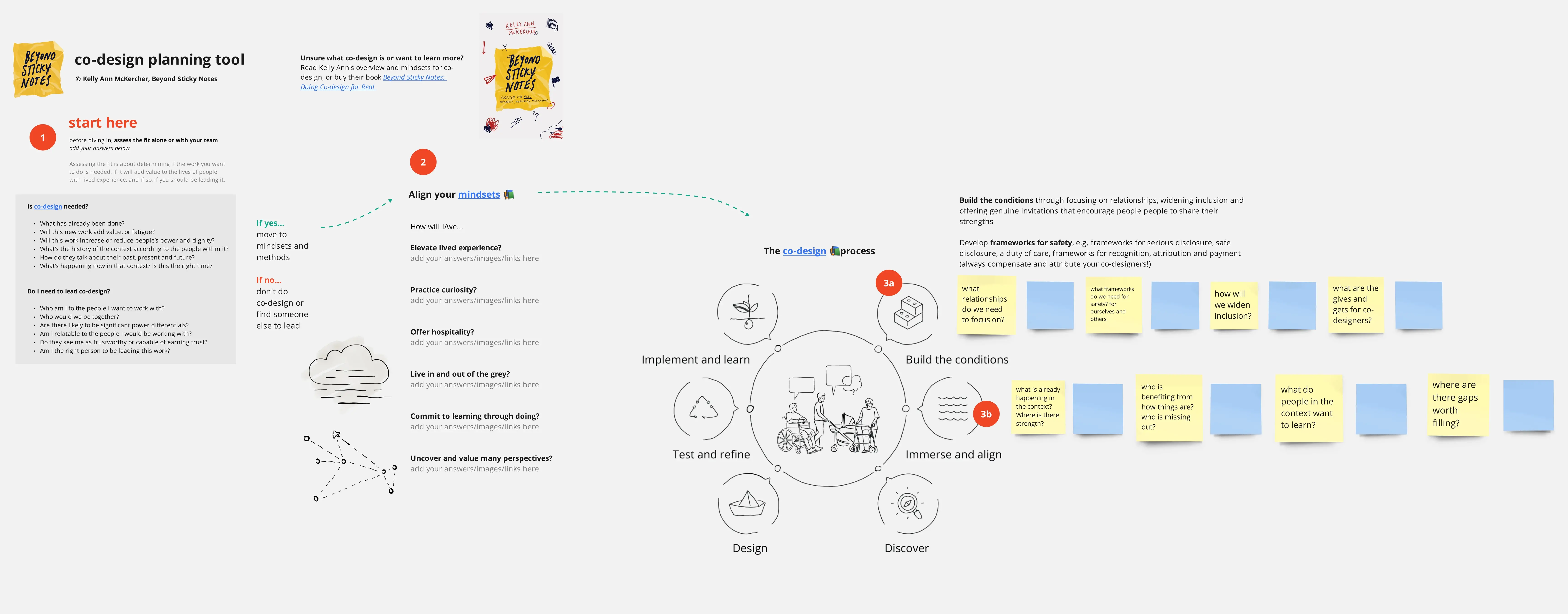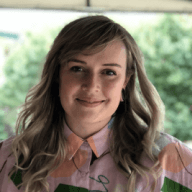Open Space Beach Design
Unleash the inherent creativity, leadership, and self-organizing capabilities when tackling a shared complex challenge. In Open Space, everyone is involved in addressing the topics that matter to them and shaping the agenda. This quickly leads participants to take responsibility for the topics they care about and actively address the challenges. By relinquishing central control (i.e., the agenda and task allocation) and placing it in the hands of the participants, you generate commitment, action, innovation, and persistence.
How to use this board:
1. Before the Open Space:
Select a complex, multifaceted and relevant topic for your Open Space.
When you already have selected a topic for your Open Space enter it at the top of the board so it is visible for everyone at all time.
Ask the participants to add their profile picture and name to the participants’ area
Make sure you have enough break-out rooms prepared. Link the room URLs to the city names. Remember to add one for Barcelona and the main hall as well.
Prepare the board and lock the items you don’t want to move around.
2. Starting the Open Space:
Welcome the participants and let them introduce themselves in a few sentences. What will I do to make this workshop a success?
Give an overview of the board. Introduce the concept of Open Space Technology if necessary (rules are below)
Present your topic for this Open Space. Why is this topic relevant for us now?
3. Collecting ideas:
Show the participants the different agenda cards and let them write down their questions or impulses.
Have everyone briefly introduce their card. If the authors of a card agree, related topics can also be combined.
The authors distribute their cards in the session planning. If there are more cards than available sessions, either hold a voting for the most popular topics or add more rooms or sessions.
4. Facilitate the breakout-sessions:
During online-meetings it might be difficult to keep track of the different rooms. It worked for us when participants drag their profile pictures into their current room.
Set a timer to your desired breakout duration and let the ideas flow.
After the time is up you can come back into the main hall to present your key results or directly move onto the next sessions.
Continue this until all sessions have been completed.
5. Gentle finish
Feedback is key. Ask participants to reflect on the event and write down their best learnings. Sharing these insights can help the rest of the group to gather impulses by other participants.
Ask for feedback on what can be improved at a future event.
Let participants share ideas for a next open space topic.
Rules of Open Space Technology
Whoever comes are the right people: This emphasizes that the event begins when the time is right, not necessarily at the top of the hour. Everyone who shows up is there because they care about the topic and want to contribute.
Whatever happens is the only thing that could have: This encourages participants to focus on the present and the future, not getting stuck in what could or should have happened.
Whenever it starts is the right time: Creativity doesn't follow a schedule, and the same goes for our discussions.
When it's over, it's over: If the discussion has reached a natural conclusion, it's time to move on. If there's more to discuss, feel free to continue in another session.
The Law of Two Feet: If you find yourself in a situation where you are not contributing or learning, feel free to move to a different discussion.
Categories
Similar templates







Comments
Read our Community Guidelines and Terms of Use.